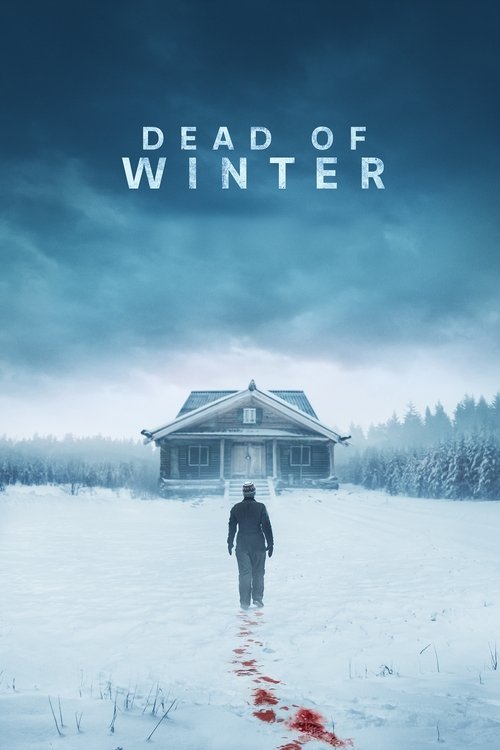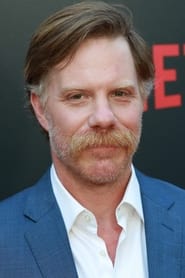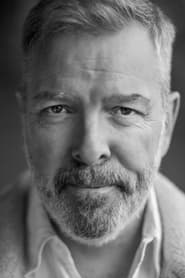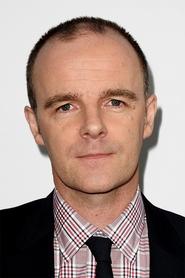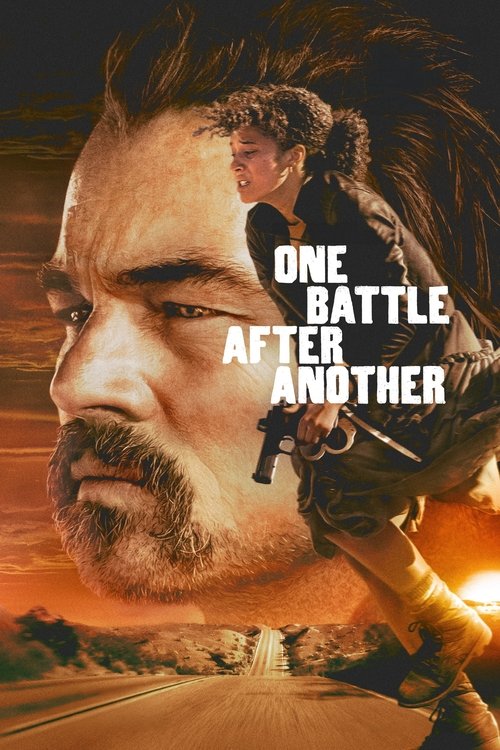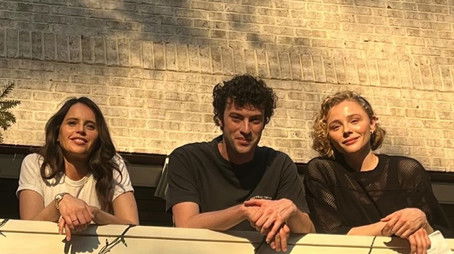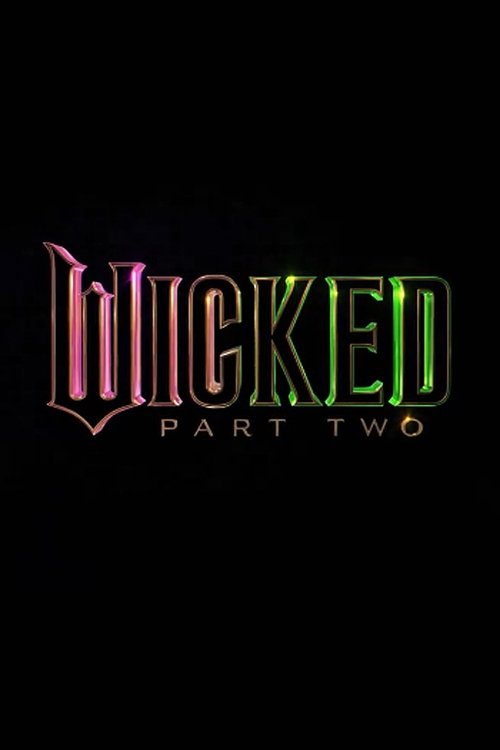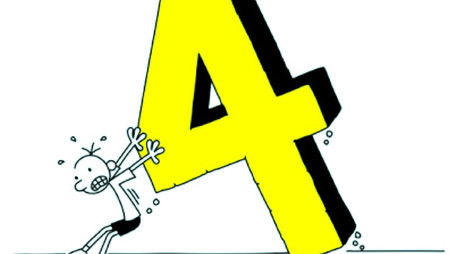
Ask Your Own Question
What is the plot?
At midnight on New Year's Eve, a woman moves through a deserted train station toward a row of lockers. She withdraws a satchel swollen with cash, slides it into the back of a parked car and speaks rapidly into her phone, assuring an unseen caller that she will be gone in minutes. A snow-driven parking lot surrounds the vehicle; the wind pushes flakes against the windshield like the beginning of something larger. Before she can start the engine, someone climbs into the backseat and seizes her from behind. The intruder's hands clamp around her throat in a crushing hold. In the ensuing struggle he rips at her left hand; the fight turns savage and one of her fingers is torn away. Blood-dark and raw, the severed ring finger falls into the snow and the woman staggers free, reeling and forever altered as she flees into the storm.
Weeks later in Manhattan, Katie McGovern wakes to a life that is fraying. She pursues acting while her husband Rob Sweeney moves from promise to unemployment. Their rent presses on them; their apartment feels a small, tight thing against their mounting anxiety. Katie answers an unexpected invitation to audition from a man called Mr. Murray. He watches her read for a role with a focused, almost clinical interest. Within moments he offers her the part and instructs her to come with him immediately. Snow pelts the city as they drive north, beyond streetlights and into a storm that thickens into a wall of white.
Mr. Murray brings Katie to an isolated country estate belonging to Dr. Joseph Lewis, a man confined to a wheelchair. The house squats under loaded boughs and drifted snow, remote and severe. Inside, Katie finds a household organized around the doctor's routines but containing gaps that do not add up. When she reaches for a wall phone the line is dead. Dr. Lewis explains that she has been invited to replace Julie Rose, an actress who broke down while the filmmakers were shooting and who can be eased out of the footage because Katie bears a strong resemblance to her. Mr. Murray trims and styles Katie's hair to match Julie's; they plan to splice new scenes so audiences will never notice the substitution.
That night the mansion takes on a different quality. Katie cannot sleep. While investigating, she discovers a leatherbound notebook that contains Polaroid photographs--snapped images of Julie Rose pinned to the pages, accompanied by notes that detail the starlet's downward spiral. The photographs are not merely clinical; they capture a series of violent moments and final, still images of a body. Katie happens upon Julie's lifeless form in a dim corridor; the sight drains color from her face. Dr. Lewis tells a story shaped as an explanation: Julie had family problems and had undergone radical therapy that fractured her mind; she became unreliable and the production folded around her meltdown. His tone carries watchfulness, as if devoting himself to containment were both a cure and a necessity.
Katie retreats to her allocated room and discovers that things have been tampered with. Her driver's license lies burning in a fireplace--a deliberate erasure of identity. Panic propels her out into the yard without a coat. She stumbles, cold and winded, and encounters Mr. Murray on the snowy path. His smile does not reassure; it feels like a cord being tightened. Back inside, Dr. Lewis offers seemingly reasonable reassurances about medication and safety. He has already given her a sedative; its fog blurs her memory of recent hours. While she sleeps under its influence she barricades her door, uncertain whom to trust.
In the night she awakens to a presence behind the bedroom mirror. Mr. Murray stands framed by the glass like a watcher; the light from the hall casts him in lurid relief. Katie peels the bandages away from one hand and sees that the left ring finger is missing--wrapped, raw and absent. She screams. Her cry threads through the rooms of the house and someone comes running.
Katie breaks free from her room and climbs to the attic where she finds a concealed phone. Her hands shake as she dials Rob. Through slurred speech and fragmented memory she tries to tell him where she is, trying to reconstruct the route Mr. Murray plotted, trying to place the name of the doctor's estate. She recalls being led away from a film set, remembers the Polaroids, and then hears Dr. Lewis's voice in the background telling the police that she is not a victim but a patient who requires care. When officers arrive, the sedative still carpets her thoughts and she cannot organize her words. Dr. Lewis works the scene, presenting Katie as Julie Rose returned--confused, ill and in need of treatment--and the police accept his framing.
Rob and Katie's brother Roland refuse to accept the police account. They drive upstate, combing backroads and calling every contact, attempting to follow the thinnest thread to the estate. Their search patterns push into a weather-stung night; they call numbers, rattle gates and show officers their mounting concern. At the mansion, Dr. Lewis hosts visitors who want answers. Evelyn Rose, Julie's sister, arrives. She looks upon Katie and believes she sees Julie; she rushes forward and embraces her, convinced that the actress she loved has resurfaced. Katie pleads with Evelyn, trying to explain that she is not Julie, that something darker has happened inside the walls of the estate.
Evelyn does not accept Katie's claims. The two women argue; voices rise and hands go for one another. In the scuffle Katie fights back. The struggle becomes violent and kinetic: arms flail, a lamp tips, hands find throats and hair tangles. In the confusion Katie strikes Evelyn and the sister collapses, struck in a way that leaves her dead on the floor. The room freezes, air suspended; blood pools. The consequence of Katie's resistance lands heavy and irreversible. Mr. Murray moves to intervene, but Katie lashes out at him as well and incapacitates him, knocking him down and leaving him unconscious on a rug.
Dr. Lewis refuses to relinquish control of the house. He pursues Katie toward the attic, attempting to use both persuasion and force to return her to the role he assigns. In the cramped rafters they exchange blows; the doctor, despite his chair-bound mobility, demonstrates a capacity for menace and calculated cruelty. Katie fights with the raw energy of someone who has lost name and support; she parries and pushes, determined not to be returned to a life in which she is merely a replacement on celluloid.
Outside, Rob and Roland arrive at the estate with local police summoned by their insistence. They burst into the house in the middle of the confrontation. Officers take in the scene: the unconscious Mr. Murray, Evelyn's body, Julie's photographs and the torn bandages on Katie's hand. Dr. Lewis stands in the attic stairwell as the men below call for him to come down. The police step forward and detain him. They secure the scene, escort Katie out of the house and place Dr. Lewis into custody. Katie, shaking and in shock, steps into the snow under the cold sky. Rob wraps a coat around her shoulders. The officers lead them to the car. Katie breathes, cold and alive, as the authorities begin their procedures and the house recedes behind them.
A different set of people confronts the deep freeze in another place. In a remote compound that lies away from the city, a group of individuals assemble under night forces and rising trouble. Among them are Richard Spader, a man marked by a certain stoicism; Dr. Kirsty McCloud, who carries both professional poise and a nervous insistence on order; Ian Goslet, a prison officer accustomed to containment and restraint; and Leo, whose presence escalates tensions with impulsive acts. The group's dynamic splits into factions almost immediately, and alliances shift as they attempt to secure the site and maintain control.
Over hours their situation deteriorates. A series of confrontations spins outward--arguments become shoves; shoves become fights. Leo, badly injured in an earlier scuffle, staggers along the property carrying a flare pistol. He aims the flare at his mouth; in a final, violent movement someone forces the trigger. The flare rockets into his face, setting him ablaze. He becomes a living torch. Burned and screaming, Leo runs toward the cliffs that border the compound and plunges from the precipice. He falls into the dark rocks below and the flame consumes him as he dies, the blaze reflecting off the wet stone. In the aftermath of that explosion of violence only three people remain alive in the compound: Richard Spader, Dr. Kirsty McCloud and Prison Officer Ian Goslet. They take stock amid wreckage and smoke, moving slowly among broken doors and scorched ground, each of them marked by injuries and the knowledge of what has been lost.
Far from both the mansion and the compound, Barb keeps an appointment she made long ago. After her husband dies she honors his last wish to scatter his ashes in Lake Hilda, their site of first dates in northern Minnesota. Snow lays itself thick across the highway as Barb drives. The route grows treacherous; drifts force her off course. Seeking directions, she stops at a small cabin where a man mends his boots and gestures vaguely toward a road. She notices blood spotting the snow and asks about it; the man shrugs and says a deer passed by.
When Barb reaches the lake she sees the man from the cabin with another woman and a young woman whose hands are bound. The two adults seize the girl and force her toward the ice. Alarm flares through her. Barb circles back to the cabin and looks through a window. She sees the bound girl held in the basement. From above she overhears the couple discussing plans to kill the captive. The air around the lake is compressed with a kind of mechanical calm; tools lie nearby and someone has constructed a makeshift medical tent on the ice.
Barb tries to free the girl by creating a diversion. She rigs up her late husband's hunting gear and sets it to draw attention; the couple returns to the ice and one of them falls into a concealed hole she has cut. While they rush to extricate him Barb attempts to open the basement door but cannot pry it free. The couple returns and fires at her as she tries to run. A bullet grazes her arm. She staggers back to her truck only to find the vehicle disabled. On the ice she discovers the man's gun abandoned on the snow. He lies hypothermic and incapacitated; the woman decides to warm him in her car. She takes him away from the scene to head to the hospital, leaving the cabin momentarily unattended.
Barb uses the man's truck radio to call for help, then sets up a second trap--she rigs her truck to explode to draw more people to the area. Hunters arrive and drive her back to the cabin to help the bound girl. The woman returns and shoots the hunters dead; one dies immediately, the other bleeds out on the floor. In the struggle Barb shoots the woman in the leg and tries to wrest control of the situation. The woman overpowers her and captures her, dragging her back into the basement, but Barb manages to get the girl's name: her name is Leah. The two women hide together in the dark, planning their escape. Barb slips a nail into Leah's bound hand to use later as a tool. When their opportunity comes they lunge for freedom; the woman catches them and forces both Barb and Leah to the lake at gunpoint.
At the ice tent the woman reveals her plan: she intends to take Leah's liver and have it transplanted into herself. Her own illness has pushed her into an extreme, clinical calculation; she arranges a meeting with a surgeon in another town to secure the transplant once she has obtained the organ. She forces Barb to tie Leah up; Barb deliberately leaves the bonds loose enough to be undone. In a sudden turn Barb uses the opportunity to disarm the woman when the gunshot she fires strikes the box containing her husband's ashes. The ashes scatter across the snow. Leah begins to saw at her bonds with the nail Barb slipped to her earlier; she frees herself and the two women struggle. Barb dislodges the woman and drives her energetic opponent back toward the hole in the ice that Barb dug earlier. Both women are injured in the fight.
Barb straps handcuffs--ones that had held her in the basement--to the antagonist and secures a cuff to her own wrist as a desperate expedient. She shoves them both into the open hole. Water swallows them; Barb takes a final motion to spread her husband's ashes into the lake as they sink beneath the surface. The woman remains cuffed, bound to Barb; they slide together into the cold. The ice seals the small tableau of struggle. Leah, freed at last, breaks her remaining bonds and pulls herself from the water onto the white expanse. Shivering, she searches the cabin and finds an old photograph of Barb and her husband tucked away. She carries it back toward civilization.
Back in the north, authorities respond to the estate. They escort Dr. Lewis away from the house. Mr. Murray, unconscious from Katie's blow, wakes to officers at his bedside; they question him and place him in a squad car. Katie stands in the snow, wrapped in a blanket as she answers factual questions from the investigators and from Rob and Roland. They take statements and photograph the Polaroids and Julie's lifeless body. The coroner removes Evelyn's body from the house and starts the process to determine cause of death. Police gather material evidence: the bandages from Katie's hand; the burning driver's license fragments; the notations in Dr. Lewis's books. Detectives escort Katie to an ambulance for evaluation while Rob watches, holding tightly to her, his face lined and exhausted.
At the compound where Leo died, Richard, Kirsty and Ian limn out what happened. They provide statements to the coroner and to officers who arrive to secure the site. They account, insofar as they can, for the cascade of events that led to the blaze and the fatal plunge. They move through the wreckage and carry injured survivors to waiting vehicles. The night settles with sirens in the distance, the compound now under the jurisdiction of law enforcement and investigators.
At Lake Hilda Leah drives away from the cabin with the photograph in her hand and a memory of someone who saved her at the cost of her life. She looks back once and sees a patch of dark water where two bodies sank, where a scattering of ashes circles like a small, stubborn fog. She holds the photograph steady and pulls it close, then goes on.
In the final scenes officials convene at the estate to process what has occurred. Dr. Lewis is led in handcuffs through the drifts; detectives haul boxes of evidence into the station. Mr. Murray's role is scrutinized; he faces questions about his complicity in luring actors and allowing abuse to continue. Katie gives a more coherent account now that she is no longer under the influence of sedatives; she tells the officers about the notebook and the Polaroids, about Julie Rose's fate and how the house erased her identity by burning her license. She recounts the bandage on her hand and how she woke to find her ring finger gone. Rob stands beside her as she signs statements, his hand steady on her back.
In the aftermath the police refrain from immediate pronouncement of charges while they complete their work, but they remove Dr. Lewis from the property and escort him toward questioning. At the compound Richard Spader, Dr. Kirsty McCloud and Ian Goslet leave alongside investigators bearing flashlights and paperwork; they travel away from the site together, their clothes stained, their faces telling the story of what they survived. On the lake Leah drives south along blacktop that reflects nothing but the lights of a distant highway. She carries the photograph of Barb and her husband and moves into the uncertain morning.
The film ends on these departures: officers transporting Dr. Lewis; Katie wrapped in a coat and leaning on Rob; three survivors walking through a compound that still smokes; Leah heading down the highway with an old photograph warmed in her hand. The snow continues to fall across all of these scenes, flaking the evidence of violence into white that covers but does not hide. The last image is of the frozen lake, placid now, its surface smooth and unbroken except for one dark spot where the ice holds memory beneath its skin.
What is the ending?
At the end of Dead of Winter (2025), Barb successfully rescues the kidnapped teenage girl by outsmarting the captors, a married couple. After a tense confrontation, Barb convinces the man to seek help for his sick wife and to involve the police, ensuring the girl's safety. Barb survives her injuries and fulfills her mission, while the captors face consequences for their actions.
Expanding on the ending scene by scene:
Barb, having discovered the kidnapped girl tied up in the cabin basement, tries to free her but fails. She then uses her late husband's hunting gear to create a distraction on the frozen lake, cutting a concealed hole in the ice. When the man chases her, he falls into this hole, temporarily incapacitated. Barb soaks the cabin with water to force the couple to leave, but they return before she can escape. During her flight, Barb is shot in the arm but manages to evade capture.
Returning to her truck, Barb finds it disabled but discovers the man's gun left on the ice. The man, suffering from hypothermia after falling into the icy water, is taken to the woman's car to be warmed. The couple wakes in a panic and heads to the lake, with the woman leaving to search for Barb. This moment allows Barb to sneak back into the cabin and use the man's truck radio to call for help.
The man returns and interrupts her, leading to a critical conversation where Barb learns the woman is sick and that the kidnapped girl was chosen because of a previous suicide attempt. Despite the complexity of their motives, Barb persuades the man to drive to the nearest town to get the police before going to the hospital for his wife.
The film closes with Barb having survived her ordeal, the girl freed, and the captors facing the consequences of their actions. Barb's determination and courage are central to the resolution, highlighting her role as the girl's only hope in the harsh, isolated winter landscape.
Who dies?
In the 2025 film "Dead of Winter," several characters face life-threatening situations, but specific details about deaths are limited in the available information. However, here is what can be inferred from the plot:
-
The Man (Camo Jacket): The man, played by Marc Menchaca, is part of a couple involved in kidnapping a teenage girl. He is wounded by Barb when she throws an axe at his foot. Later, he attempts to make amends by driving to the police station but meets his wife on the way. His wife, driven by madness, is ready to kill him. Although it is not explicitly stated that he dies, the implication is that he does not survive the encounter with his wife.
-
The Woman (Purple Lady): There is no explicit mention of her death in the available information. She is portrayed as the orchestrator of the violence and is driven by a form of madness. Her fate remains unclear based on the provided sources.
-
Barb's Husband (Karl): The story begins with Barb's journey to scatter her late husband's ashes at Lake Hilda. His death is a prelude to the events of the film and serves as a motivation for Barb's actions.
-
The Teenage Girl: The girl is kidnapped by the couple but is not mentioned as dying in the available information. Barb's efforts are focused on rescuing her.
The narrative focuses on Barb's survival and rescue mission, with the couple's actions and motivations driving the plot's tension and suspense. The film's climax involves Barb's confrontation with the couple, but specific details about the couple's ultimate fate are not fully detailed in the provided sources.
Is there a post-credit scene?
There is no post-credit scene in the 2025 movie "Dead of Winter." The film concludes with the main plot resolved, and there are no additional scenes after the credits roll. The story follows Barb, played by Emma Thompson, as she navigates a dangerous situation in the snowy wilderness of northern Minnesota. After interrupting a kidnapping, Barb finds herself in a desperate fight to save the young girl and herself from the kidnappers. The movie ends with Barb having successfully outsmarted the villains and ensured the girl's safety, but there is no further content beyond the credits.
What motivates Barb to go to Lake Hilda and how does her personal history influence her actions?
Barb is motivated to go to Lake Hilda to fulfill her late husband's last request to have his ashes scattered there, as it was where they had their first date. Her grief and memories of their past deeply influence her emotional state and determination throughout the film, driving her to take risks to help the kidnapped girl she encounters.
Who are the couple Barb encounters at the cabin and what are their roles in the kidnapping?
The couple consists of a man, credited as Camo Jacket, and a woman, credited as Purple Woman. They are kidnappers holding a young woman captive in the cabin basement. The woman in purple appears to be the orchestrator of the violence, while the man is involved in the abduction and is later revealed to have a sick wife, which ties into the reasons behind the kidnapping.
How does Barb manage to trap the kidnappers and what tactics does she use to try to rescue the girl?
Barb uses her late husband's old hunting gear to create a distraction, luring the man into a concealed hole in the ice where he falls in. She also soaks the cabin to force the kidnappers to leave temporarily. Despite being shot in the arm and her truck being disabled, she sneaks back to the cabin to make a radio call for help, showing her resourcefulness and determination.
What is revealed about the kidnapped girl and the kidnappers' motivations during the film?
It is revealed that the kidnapped girl was chosen because of a previous suicide attempt. The kidnappers' motivations are complex and tied to the man's sick wife, suggesting that the kidnapping is part of a desperate or nefarious plan related to her condition. Barb learns these details during her confrontation with the kidnappers.
How does the film portray Barb's physical and emotional endurance throughout the rescue attempt?
Barb is shown stitching up her own gunshot wound and continuing her efforts despite pain and danger. The film emphasizes her courage and determination as she navigates the blizzard, confronts the kidnappers, and uses her wits to protect the girl. Her emotional endurance is highlighted through flashbacks and her reflections on her late husband, adding depth to her character's resilience.
Is this family friendly?
The 2025 movie Dead of Winter is not family friendly and is rated R for violence and strong language. It contains several potentially objectionable or upsetting elements for children or sensitive viewers, including:
- Violence and gore: Scenes involving gunfire, physical struggles, injuries, and death, including people being shot at and suffering injuries, as well as a tense final confrontation.
- Strong language: At least 35 uses of strong profanity, including multiple uses of the F-word.
- Partial nudity: Brief non-sexual partial nudity, such as a nude man shown recovering from hypothermia and a teen girl with her top cut open revealing her abdomen.
- Emotional intensity: Themes involving life-threatening illness, discussions of suicide attempts, death of loved ones, and several intense arguments.
- Disturbing content: The presence of a psychotic antagonist and scenes involving abduction and rescue, which may be frightening or upsetting.
Overall, the film's gritty thriller nature, violent content, strong language, and emotional heaviness make it unsuitable for children and potentially distressing for sensitive viewers.

